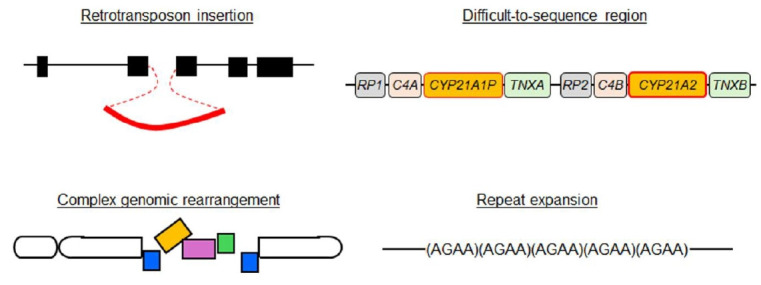Long-read next-generation sequencing for molecular diagnosis of pediatric endocrine disorders.
IF 3.3
Q3 ENDOCRINOLOGY & METABOLISM
Annals of Pediatric Endocrinology & Metabolism
Pub Date : 2024-06-01
Epub Date: 2024-06-30
DOI:10.6065/apem.2448028.014
引用次数: 0
Abstract
Recent advances in long-read next-generation sequencing (NGS) have enabled researchers to identify several pathogenic variants overlooked by short-read NGS, array-based comparative genomic hybridization, and other conventional methods. Long-read NGS is particularly useful in the detection of structural variants and repeat expansions. Furthermore, it can be used for mutation screening in difficultto- sequence regions, as well as for DNA-methylation analyses and haplotype phasing. This mini-review introduces the usefulness of long-read NGS in the molecular diagnosis of pediatric endocrine disorders.


用于儿科内分泌疾病分子诊断的长读数新一代测序技术。
长线程下一代测序(NGS)技术的最新进展使研究人员能够发现一些被短线程 NGS、基于阵列的比较基因组杂交和其他传统方法所忽视的致病变异。长读数 NGS 在检测结构变异和重复扩增方面尤其有用。此外,它还可用于困难序列区域的突变筛选,以及 DNA 甲基化分析和单倍型分期。这篇微型综述介绍了长读 NGS 在儿科内分泌疾病分子诊断中的作用。
本文章由计算机程序翻译,如有差异,请以英文原文为准。
求助全文
约1分钟内获得全文
求助全文
来源期刊
CiteScore
4.00
自引率
18.20%
发文量
59
审稿时长
24 weeks
期刊介绍:
The Annals of Pediatric Endocrinology & Metabolism Journal is the official publication of the Korean Society of Pediatric Endocrinology. Its formal abbreviated title is “Ann Pediatr Endocrinol Metab”. It is a peer-reviewed open access journal of medicine published in English. The journal was launched in 1996 under the title of ‘Journal of Korean Society of Pediatric Endocrinology’ until 2011 (pISSN 1226-2242). Since 2012, the title is now changed to ‘Annals of Pediatric Endocrinology & Metabolism’. The Journal is published four times per year on the last day of March, June, September, and December. It is widely distributed for free to members of the Korean Society of Pediatric Endocrinology, medical schools, libraries, and academic institutions. The journal is indexed/tracked/covered by web sites of PubMed Central, PubMed, Emerging Sources Citation Index (ESCI), Scopus, EBSCO, EMBASE, KoreaMed, KoMCI, KCI, Science Central, DOI/CrossRef, Directory of Open Access Journals(DOAJ), and Google Scholar. The aims of Annals of Pediatric Endocrinology & Metabolism are to contribute to the advancements in the fields of pediatric endocrinology & metabolism through the scientific reviews and interchange of all of pediatric endocrinology and metabolism. It aims to reflect the latest clinical, translational, and basic research trends from worldwide valuable achievements. In addition, genome research, epidemiology, public education and clinical practice guidelines in each country are welcomed for publication. The Journal particularly focuses on research conducted with Asian-Pacific children whose genetic and environmental backgrounds are different from those of the Western. Area of specific interest include the following : Growth, puberty, glucose metabolism including diabetes mellitus, obesity, nutrition, disorders of sexual development, pituitary, thyroid, parathyroid, adrenal cortex, bone or other endocrine and metabolic disorders from infancy through adolescence.

 求助内容:
求助内容: 应助结果提醒方式:
应助结果提醒方式:


